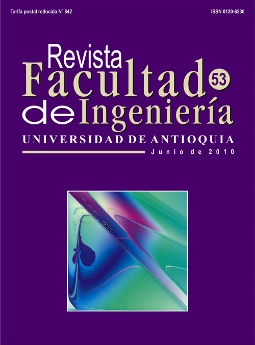Experimental model of a unipolar motor
Keywords:
homopolar motor, modeling, electromagnetic inductionAbstract
The experimental characterization of a unipolar motor is described with the objective to validate its mathematical model. This kind of motor is quite controversial to explain not only its model but also how it works. It has been around for about two centuries and it is unknown the way it operates. It seems that can not be explained by using the conventional Maxwell equations; it is a device that generates an electromotive force (emf) although the magnetic flux is time independent. The prototype constructed verified the proposed model correctness, i.e. an electrical resistance and a power generator, because an exponential increasing in its angular velocity was observed. The motor transfer function is of first order, as was expected, since there are not inductors or capacitors; however, it spent about thirty to forty seconds to reach its steady state; this is because of the internal electrical resistance of this device according to the model.
Downloads
References
T. Valone. The homopolar handbook. A definitive guide to faraday disk and n-machine technologies. Ed. Integrity Research Institute. Washington (DC). 2004. pp. 1-59.
General Atomics. San Diego. California: http://www.ga.com/atg/EMS/homopolar.php . Consultada el 5 de marzo de 2008.
A. Martín. “Motor Homopolar”. Revista Eureka sobre enseñanza y divulgación de las ciencias. Vol 4. 2007. pp. 352-354.
J. Schlichting, C. Ucke. “Un motor eléctrico de construcción sencilla, bajo costo y alta tecnología”. Physik in unserer Zeit. Vol 35. 2004. pp. 272-273.
Motor unipolar. Disponible en: ttp://exa.unne.edu.ar/depar/areas/fisica/electymagne/teoria/elecmagnet/ inducción/homopolar/homopolar.htm. Consultada el 3 de noviembre de 2007.
W. Hayt. Teoría electromagnética. 5ª. ed. Ed. Mc Graw Hill. New York. 2005. pp. 298.
P. Frigerio, G. Labruna, M. Larreguy. Generador de faraday de una sola pieza. Universidad Favaloro. Buenos Aires. 2001. pp. 6-42.
H. Montgomery. “Unipolar Induction: a neglected topic in the teaching of electromagnetism”. Eur. J. Phys. Vol. 20. 1999. pp. 271-280.
M. Superczynski, D. Waltman. “Homopolar motor with high temperature superconductor field windings”. IEEE transactions on applied superconductivity. Vol. 7. 1997. pp. 336-342.
A. Ampere. “Reponse a La Lettre De M. Van Beck Sur Une Nouvelle Experience Electro-Magnetique”. Journal de Physique. 1821. T. XCIII. http://sidam.at.tut.by/en.html. Consultada el 5 de diciembre de 2007.
H. Montgomery. “Some Comments on J. Guala- Valverde’s Experiments on Unipolar Induction”. Apeiron. Vol. 14. 2007. pp. 34-37.
D. López, G. Acuña. Motor-generador unipolar. Facultad de ciencias exactas y naturales. Universidad de Buenos Aires. 2005. pp. 435-441.
K. Sandoval. Modelado y caracterización de un motor unipolar. Trabajo de grado. Universidad Industrial de Santander. 2008. pp. 1-82.
A. Crapo, J. Lloyd. “Homopolar dc Motor and Trapped Flux Brushless dc Motor Using High temperature Superconductor Materials”. IEEE Transactions on Magnetics. Vol. 27. 1991. pp. 234-239.
Downloads
Published
How to Cite
Issue
Section
License
Copyright (c) 2018 Revista Facultad de Ingeniería

This work is licensed under a Creative Commons Attribution-NonCommercial-ShareAlike 4.0 International License.
Revista Facultad de Ingeniería, Universidad de Antioquia is licensed under the Creative Commons Attribution BY-NC-SA 4.0 license. https://creativecommons.org/licenses/by-nc-sa/4.0/deed.en
You are free to:
Share — copy and redistribute the material in any medium or format
Adapt — remix, transform, and build upon the material
Under the following terms:
Attribution — You must give appropriate credit, provide a link to the license, and indicate if changes were made. You may do so in any reasonable manner, but not in any way that suggests the licensor endorses you or your use.
NonCommercial — You may not use the material for commercial purposes.
ShareAlike — If you remix, transform, or build upon the material, you must distribute your contributions under the same license as the original.
The material published in the journal can be distributed, copied and exhibited by third parties if the respective credits are given to the journal. No commercial benefit can be obtained and derivative works must be under the same license terms as the original work.






 Twitter
Twitter